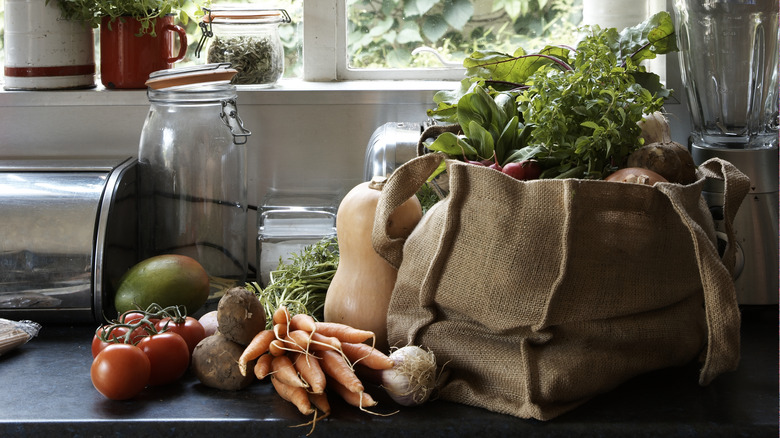To help the Earth and cut down on plastic waste, using reusable grocery bags is a great idea. It is important to follow certain safety rules when moving raw foods, especially meats, poultry, and seafood, to keep them from getting contaminated and to make sure they stay safe to eat. In this piece, we’ll talk about some safe ways to use reusable bags, especially when dealing with raw foods, and why it’s better to use specific items like cooler bags.
The Importance of Properly Handling Raw Foods
Raw foods, particularly meats, can harbor harmful bacteria such as Salmonella and E. coli. These pathogens can easily transfer to other foods if not properly contained, posing a significant health risk. When shopping, it’s important to keep raw foods separate from ready-to-eat items like fruits, vegetables, and dairy products. This helps prevent the spread of bacteria, which can lead to foodborne illnesses. Proper storage, handling, and cleaning are essential to maintaining food safety.
1. Use Separate Bags for Raw Foods
One of the most crucial practices is to always separate raw foods from other groceries. When shopping for items like poultry, seafood, or beef, place these items in a separate bag. Ideally, choose a bag with a waterproof lining or use a dedicated cooler bag for these products. Cooler bags are designed to keep food at a safe temperature during transport and can help prevent the spread of liquids or juices that may leak from raw meat packaging. Avoid placing raw foods in bags where fresh produce or pre-packaged goods will come into contact with them.
2. Choose the Right Bags
Not all reusable bags are suitable for transporting raw foods, particularly those that are perishable or need to be kept cool. Opt for high-quality, insulated cooler bags when transporting raw meats or other items that need temperature control. These bags are designed to maintain the temperature of the contents, keeping meats cool and reducing the risk of bacterial growth. Additionally, cooler bags are often equipped with leak-proof linings, preventing any juices from seeping into your other groceries and contaminating them.
3. Keep Raw Foods Cool
Temperature control is essential when handling raw foods. If you are buying raw meat, especially on a hot day, use a cooler bag with ice packs to ensure the meat stays at a safe temperature (below 40°F or 4°C) during transport. Many cooler bags are designed with a double-layered, insulated construction, which helps maintain a cool temperature for extended periods. Always aim to get raw meats and perishables into the refrigerator as soon as possible to prevent bacterial growth.
4. Clean Your Bags Regularly
Reusable bags are better for the environment than single-use plastic bags, but they need to be taken care of properly. It’s important to clean your reusable bags well after every trip, especially if you used them to carry raw foods. You should wash the bags on hot if they can be washed in a machine. If not, clean the inside with warm washing water and let it dry completely before putting it away. Make it a habit to clean your bags every time you use them to make sure there are no germs left over that could get on your food when you go shopping again.
5. Handle Raw Foods with Care
In addition to using the right bags, proper handling of raw foods is key to preventing contamination. Always pack raw foods in leak-proof packaging. If possible, choose vacuum-sealed or tightly sealed packages to reduce the chance of juices leaking. When unloading groceries at home, be sure to immediately transfer raw meat or seafood to the refrigerator or freezer. If you leave raw foods in the car for a long time, especially on hot days, bacteria can grow, and the food could become dangerous.
6. Use Dedicated Bags for Raw Foods
If you frequently shop for raw meat, poultry, or seafood, consider designating specific reusable bags for these items. Even if you clean your bags regularly, it’s a good idea to avoid cross-contamination by using bags specifically for raw foods. By designating a bag or two for this purpose, you can minimize the risk of bacteria spreading to other groceries.
Conclusion
It’s great to use reusable bags to cut down on plastic waste, but it’s important to be extra careful with raw foods, especially those that need to stay cool. Some important things you can do to keep your food safe are to use cooler bags, keep things clean, and separate raw foods from ready-to-eat items. You can transport raw foods safely if you follow these tips. You won’t have to worry about food safety or being good to the world. Remember that extra care goes a long way toward keeping your food safe to eat and stopping contamination.


